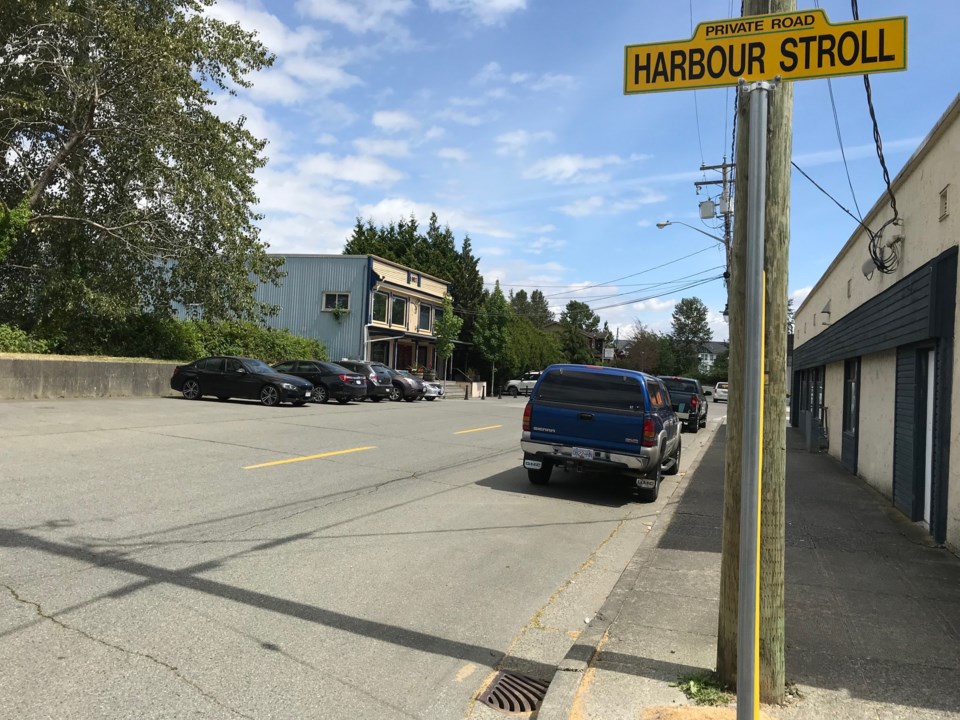A lot of the ideas now being discussed by the Ladner Village Renewal Advisory Committee have a familiar ring to them.
A decade ago the Downtown Ladner Waterfront Redevelopment Advisory Committee had a similar task looking at ideas on encouraging redevelopment and revitalization of the waterfront and village core.
In an interview in the summer of 2010, vice-chair Heather King, noting Ladner Harbour could become a major draw, said they would refine urban design options and develop implementation strategies.
A consultant would be needed to see if their ideas were even economically feasible, said King.
The committee had been exploring various issues, including parking as well as increasing density and building heights, to encourage redevelopment.
Some of the ideas for changing the look of the area included floating walkways and walkways perpendicular to the dike leading to "porches" on the waterside of buildings.
And that certainly wasn’t the first time there was talk of revitalizing Ladner's waterfront, either.
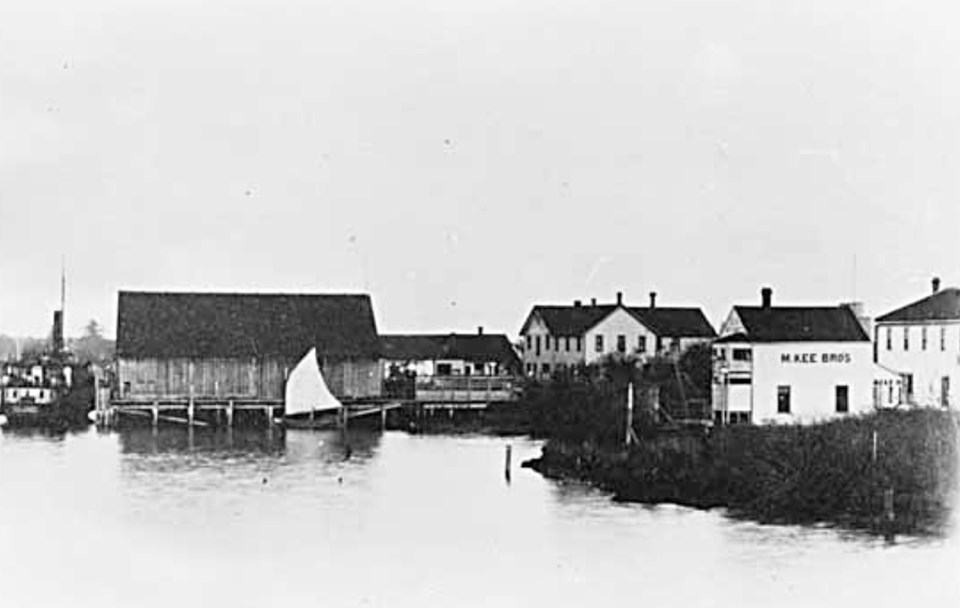
A Delta Archives photograph from around 1900 showing Ladner Harbour. There was a large large warehouse at the government wharf and some of the other buildings included the municipal office, the Delta Hotel and the McKee Brothers butcher shop.
In 1980, for example, a study by a team of 25 UBC architecture students came up with a series of recommendations for a plan that would capture the essence of Ladner as a fishing and farming community and build around that theme.
Professor Raymond Burton addressed the Ladner Business Association on the recommendations that year, saying the area has "unique environmental qualities" like fishing, farming and retailing opportunities that "could attract people from all over the Greater Vancouver area."
Fast-forward a few decades, and while there had been much talk of revitalization, there was little follow-through.
King said the ideas of her committee which formed in 2009 wouldn’t "collect dust on a shelf".
Change would be more of a certainty with incentives for property owners and a timeline for implementation.
"That's one of the criticisms, that when we've gone to the people of Ladner that have lived here for many years they had a healthy dose of skepticism that this is going to come to fruition. I think that's changing now that they're seeing concrete implementation steps," said King.
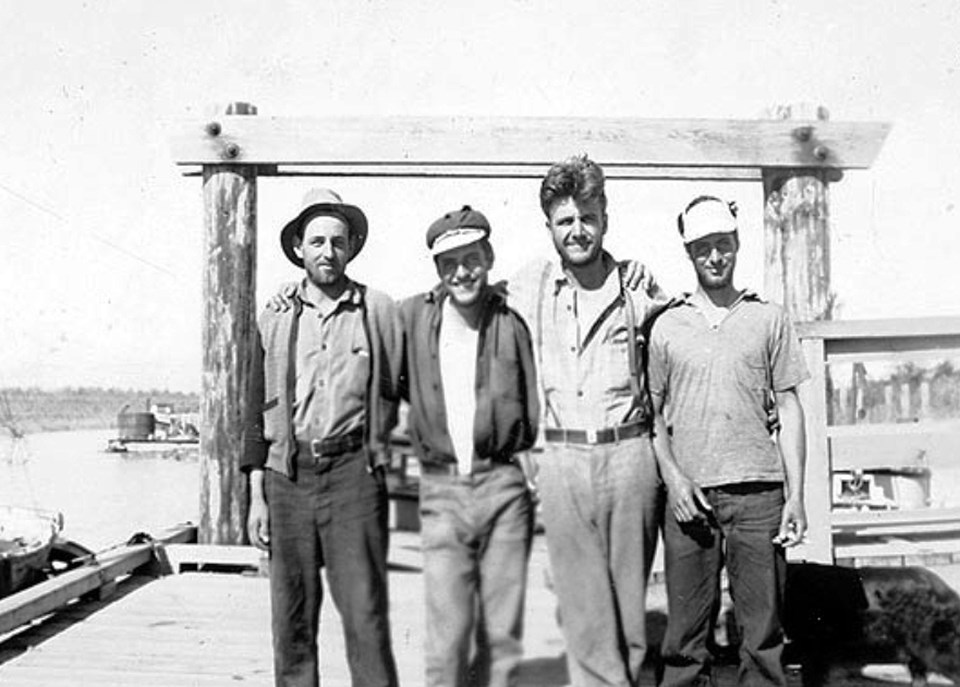
A 1937 photo of four men at the government wharf in Ladner Harbour - Mike Smith, Harry Maxwell, Wally Fenton and Raynie Maxwell.
In 2008, Delta used $2 million it received in amenity money from Port Metro Vancouver to acquire the Seven Seas property on Chisholm Street, located next to the Brackman-Ker site, also owned by the municipality.
Today, it remains vacant with the city citing the inability to secure long-term water lot leases as the major detriment.
As far as other ideas in 2010, King said the heritage of the area could be highlighted with well-placed artifacts at the buildings and along a boardwalk. At Spot on the Water Park on Chisholm Street, there's an opportunity to set up a dock for tourists coming in by boat, she suggested.
King also agreed better signage could direct motorists to visit the harbour, creating a tremendous tourist hub, but there needed to be more than the seasonal events such as the Ladner Village Market for them to visit.
"I think that's definitely why we need to also look at do we need to increase density. Because putting in these great artisan coffee shops, etc., is wonderful, but you really need to have the residential base to support and sustain it. But we want to make sure any increase in density is supported and done very gradually."
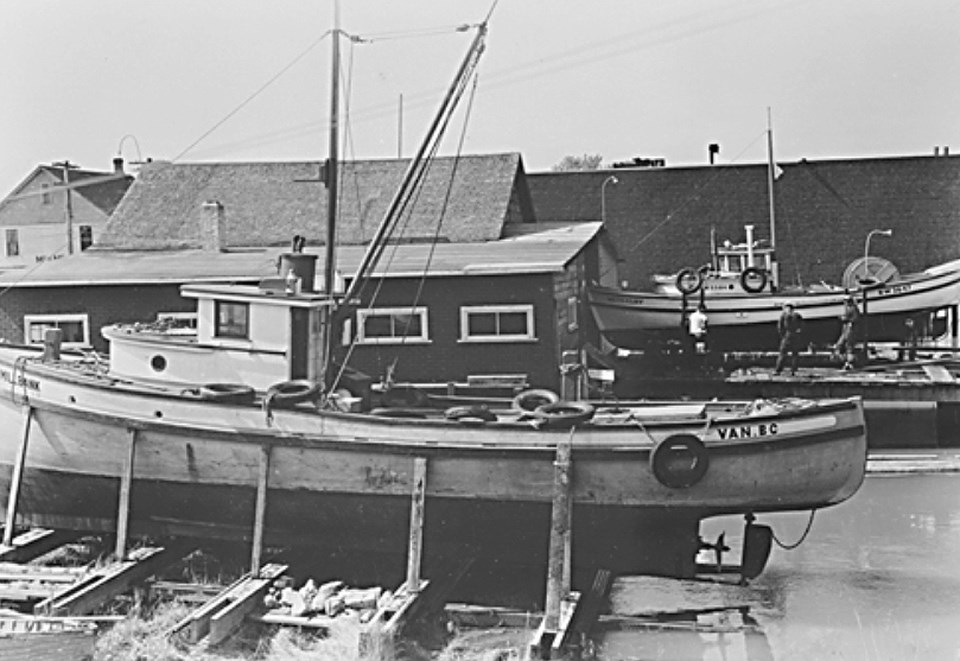
A 1950 photograph from the Delta Archives showing the east side of Massey's Machine Shop at Ladner Harbour with two fishing boats in dry dock for repair.
The newest committee in 2019 has been looking at various ideas including allowing greater residential density within the core and even waterfront.
It was also suggested at a recent meeting if Delta is going to be a driver of change, then the city should provide a public amenity first in conjunction with development of other city-owned lands. It was noted that in the mid-1980s there was an investment in Steveston as a waterfront promenade and landing that allowed people to walk out to the river’s edge, so there needs to be a public gathering space along the waterfront.
As far as the Delta-owned sites on the waterfront, it was suggested one possibility is that they could be developed as a year-round amenity.
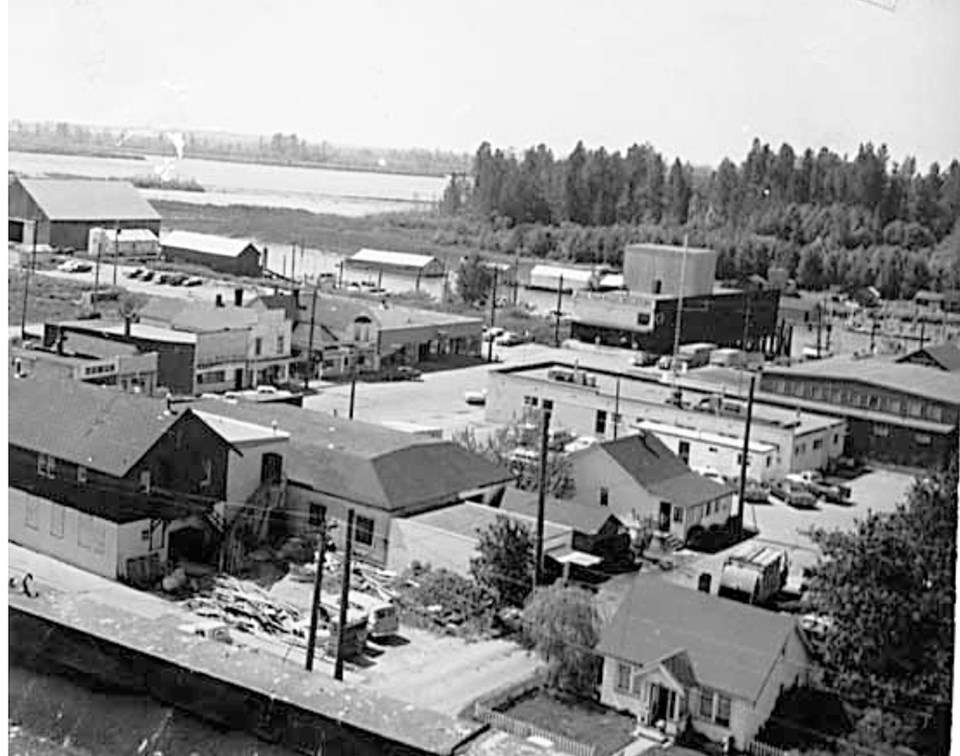
A 1970 view of the west end of Ladner Harbour at the intersection of Delta and Chisholm streets, taken from the top of the Surrey Co-op tower.
Another suggestion raised by a guest panelist from the development community is for the city to acquire and assemble land and then sell it.
It was also noted Ladner is being blocked from moving forward because the waterfront is stagnate but once it is opened to development, and views to the water are opened, it will be a catalyst for change and signal that Delta wants to see redevelopment.
At another meeting this summer, a panel of local architects gave the committee their two cents worth with Brian Hart saying it’s clear a taller building with more residential is needed to make it worthwhile, but the city’s current zoning and community plan won’t allow it.
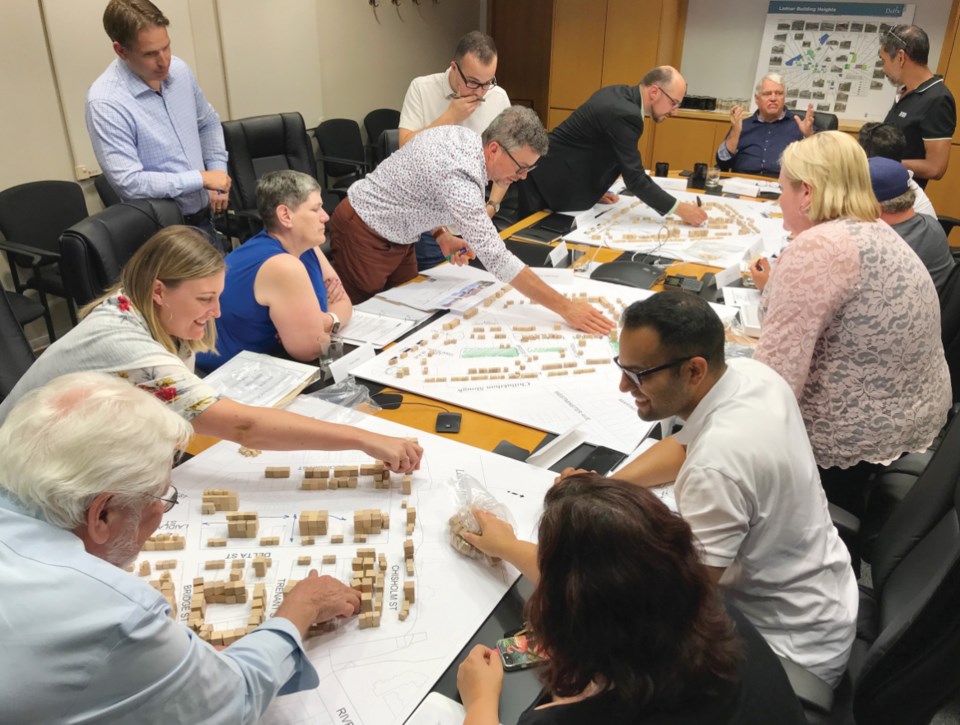
The Ladner Village Renewal Advisory Committee explored different densities for the downtown core and waterfront with higher-storey buildings which could be seen by developers as more economically feasible
“You have policies, you have OCPs, you have zoning regulations, all of that stuff which doesn’t leave enough space for a developer to figure out what he needs to do. So get out of the way and just tell us what you want your town to look like and give us, the development industry, a chance to show you how to build it,” said Hart.
Joe Muego agreed, saying a performance-based approach, rather than prospective zoning, is needed.
Wesley Wollin said there’s no “hook” to encourage people to visit the village and that more incentives are needed. Otherwise, redevelopment will be very slow and on a patchwork basis, he warned.
At the end of each calendar year the committee will present council with a report that includes a summary of annual achievements and a proposed work program for the coming year.
